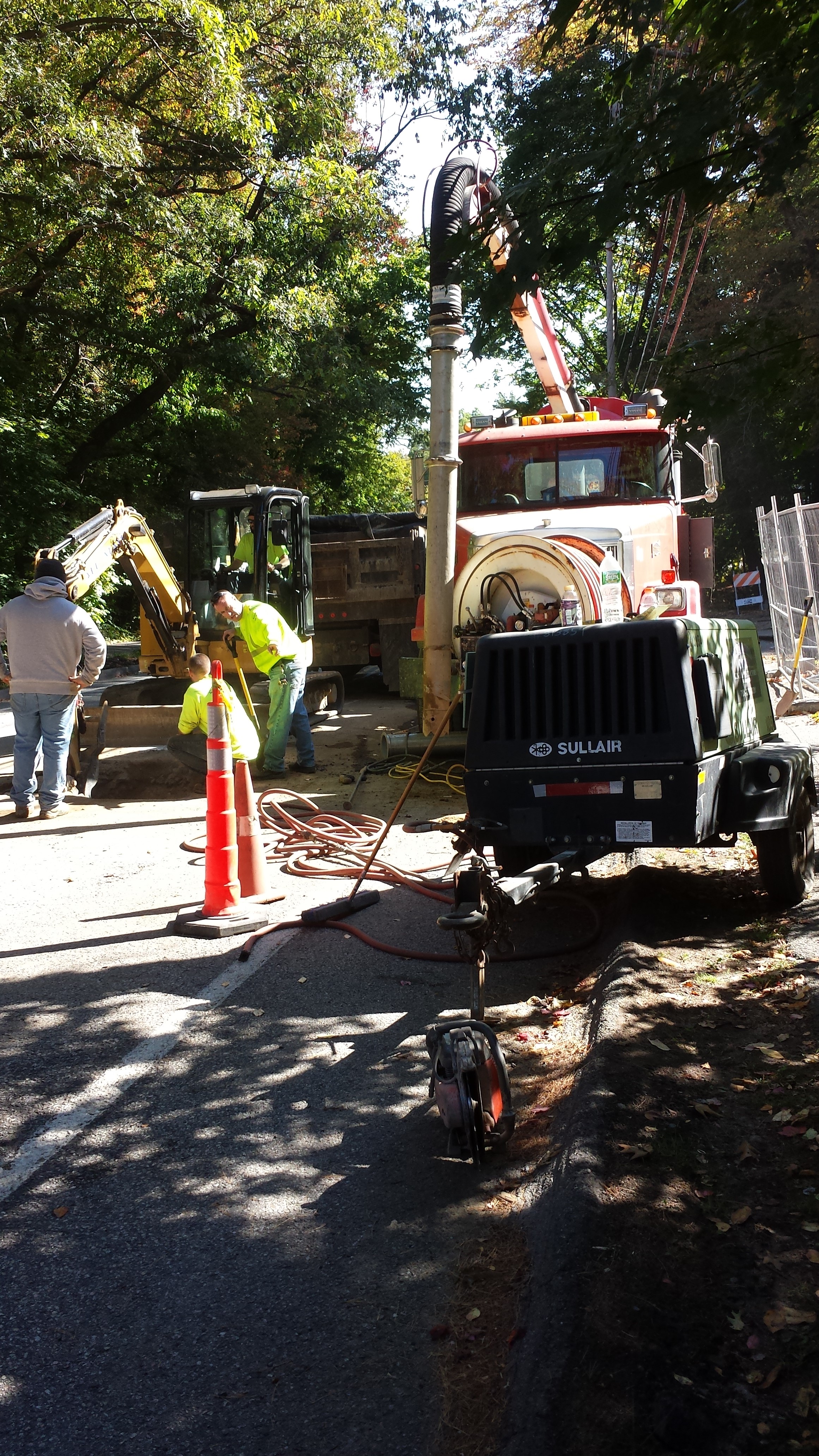
What You Can Do to Keep Your Parking Lot Water-Free
In our last blog, we talked about all of the damage that pooling water can inflict upon your parking lot. There are many ways to avoid this potentially hazardous, and costly, problem. The best strategy comes before even pouring your concrete. But there are still other ways to combat this problem long after the asphalt has already been laid. Here we’ll take a look at some smart parking lot drainage solutions.
Preventing Water Damage Before Your Parking Lot is Poured
Like they always say, prevention is much better than having to treat a problem later on. So if you can take steps to prevent structural damage before the concrete is ever poured, we recommend that you do. The truth is, water that reaches the subgrade can compromise the integrity of your parking lot, making it vulnerable to potholes, and even sinkholes, over time. So before you pour your parking lot, consider installing a drainage system below the subgrade. This will force the water to travel to levels below the subgrade, which will keep your parking lot structurally solid. If your business is located in an area that gets high amounts of rainfall, having an underground drainage system is a wise choice.
But how do you know for sure that your subgrade will hold? Have a professional test it. There are some basic guidelines that will need to be met. For example, the subgrade will have to have 95 percent density—the standard necessary to hold enough weight and to prevent the lower soil from collapsing.
Preventing Water Damage: Smart Strategies DURING the Pouring of Your Parking Lot
If you believe there are low areas, or particularly vulnerable areas of land where your parking lot is being placed, you can have extra asphalt poured in these areas. This is an especially good idea if flooding is a problem where your business is located. It won’t solve all of the possible cracks that may develop over time, but it can help to ease the effects of pooling water.
When pouring the asphalt, make sure you slope the surface, creating high and low areas in the parking lot. This will allow water to travel down toward a culvert or storm sewer grates. Remember, parking lot drainage slopes need to have a grade higher than 0.4 percent, so they won’t tend to flood as much. Anything flatter will create pooling and flooding problems. If the area is too flat and you can’t slope it anymore, have storm sewers installed. If you have steep grades in your parking lot, you can install curb gutters, which will direct the run-off into a storm drain or low-lying area. Sloping is all about letting nature take its course, using gravity to make the water go where you want it to.
Preventing Flooding Problems in an Existing Parking Lot
Let’s say you have a parking lot with no drainage system. You either didn’t install a system because you were unaware of the necessity, or the parking lot was like that when you purchased the property. Now that you know. . .don’t despair! You can still install storm sewers and curb gutters after the fact. However, the cost is much higher than it would have been in the beginning. It will also create some disruption to your property while the work is being done. But it’s worth it in the long run.
Another thing you can do now that you already have a parking lot—be sure to monitor it regularly. Check for areas of pooling, cracking or other trouble spots. Check the outer edges where the concrete has been poured. And schedule regular drainage maintenance with professionals, like the ones at Jolin Paving & Excavating, Inc. to ensure that your drainage system is working properly and efficiently.
Jolin Paving & Excavating, Inc. provides a wide variety of services at reasonable rates. Contact us today for a consultation. And keep checking our blog for more tips!
Jolin Paving & Excavating, Inc. is your New England connection—serving Massachusetts, southern New Hampshire, Vermont, Maine and northern to central Connecticut and Rhode Island.
